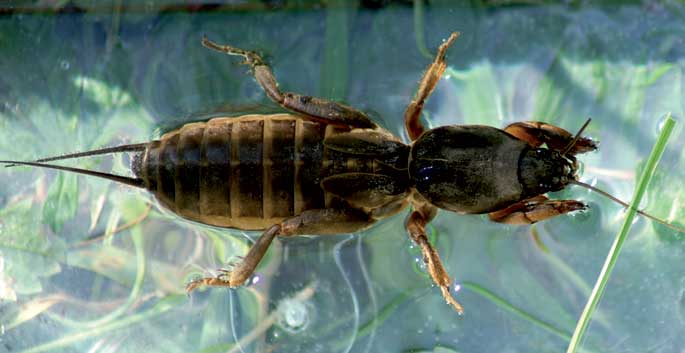Ux, ux, diseases and pests

When we want to put an end to the pests caused by plant insects, we say soap is a good auxiliary and we say it. Insects don't have, like us, internal skeletons to hold the body. They only have cavities and viscera in the inside of the body and their skeleton is a hard outer skin, called an exoskeleton. This skin is the main protection of insects and has multiple functions such as holding muscles, breathing, controlling hydration, etc.
Once wet with soap, we weaken and damage the skin of the insect, remove the fat that protects it and, consequently, will have breathing problems, dehydrate, will burn the sun. In the same way, if we add some insecticide to the wet soap, it will be introduced more easily through weak skin.
There are as many soap as you want, but the most appropriate one is potassium soap or black soap. Soap fat or fat is mixed with a base, called “saponification”. A lot of fat, fat and oil are used, but the base is usually soda or potash. The base of soda is sodium and potassium potassium is potassium. Sodium is a crude element for the life of the earth. Potassium provides weaker soap and, in turn, potassium is food for plants. Therefore, using one soap or another, we will destroy or feed the soil beneath the plant.
Making potassium soap is simple. The base is vegetable oil, to which we will add ashes or edible potash. The first one is softer and more eco-friendly, as water and sun get rid of it easily. So, come on! Put a liter of water in a metal container (not aluminium) and add the wood ash, about half a kilo, mix well and leave in a couple of days. The water should collect potassium carbonate, the concentration of which is measured by introducing a potato, with half remaining in water in the air. If you go down, mix more ashes and leave another two days. Test the potato until it goes well. Then, add a liter of oil, mixing it gradually, until a dough is made. Heat well in the oven until thickened. The most effective soap is the pH between 8 and 9. If it's bigger, go down with a little lemon. To use, mix the water a little and wet the plant on all sides, up and down, left and right. You'll kill insects and drive away diseases, uf!
I have already told you that the pig fly (Phytomyza gymnostoma) has come to visit the Basque Country. New epidemic. Let's get ready. The leek fly has two generations a year. The first one is born of those who have spent the winter as a pupa. Flies, greys and 3 millimeters, males... [+]
I have the impression that I come with bad news. Bad news. The worst, the worst, the worst. The bad thing is that before the news is heard it will be old and we will get used to it.
In 1858 a special, never cataloged fly was found in the Polish region of Poznan, which was named... [+]
Hello. You are advised to make a treatment with white cochineal plague tobacco. Can it be done with cigars or cigars, or does it have to be grass? In what proportion? And finally, I've bought larvae from black-haired grandmothers, because I've heard that they eat cochineals and... [+]
The potato insect is one of the worst pests in Europe. It looks like a beautiful war. It is an oligophagus, that is, it only eats a few foods: potatoes (Solanum tuberosum), but it also attacks the eggplant (Solanum melongena) and tomato (Solanum lycopersicum) of its relatives... [+]
Aurten sekula baino har gehiago ikusi dut porruetan (Allium porrum) barrena. Acrolepiopsis assectella izena duen har ttiki txatxu batek porruaren bihotzean zulobidea egiteko ohitura du. Porrua begi bakarreko landarea da; hosto guztiak kimu bakar baten bueltan hazten dira, baita... [+]
Erriberetako izurrite handienetakoa da luhartza (Gryllotalpa gryllotalpa). Ondo latina jarri zioten izena: “gryllo” kilkerra eta “talpa” satorra. Bikoitza da luhartza: era berean kilker handi bat eta sator ttiki bat. Euskaraz izen mordoa duela egingo... [+]
A mole conspires. Go, go, find friends to create new topos and multiply them. On the road he will pick up worms. The mole feeds mostly on worms. Its txistu has a kind of poison and without dying it can cause the worms to sneak in and keep them motionless. It is said that worm... [+]
Plants with crocheting in the orchard have rivals for salos or comilones. The best known in this family are cabbage from Brussels, cauliflower, broccoli and Romanesque hand, which belong to the genus Brassica. We have known for a long time that these plants are very good for... [+]
Aurten adina barraskilo eta, batez ere, bare ez dut sekula ezagutu. Hau da gasteropodo desdetxa, hau da festa. Ur festak dakar bare dantza. Eguneko ordu beroenetan izan ezik, hankaperaino hurbiltzen dira, lasaipoto asko. Horra etxe aurreko klematisaren (Clematis sp.) petalo... [+]
Malakologo eginak daude nekazariak Euskal Herria hezean. Soinberei edo moluskuei nondik nora gaina hartu ikertzen eta saiatzen belaunez belaun sortutako jakintza da malakologia. Barraskiloak eta bareak dira nekazarien molusku ezagunenak. A zer parea! Barraskiloa eta barea... [+]


















